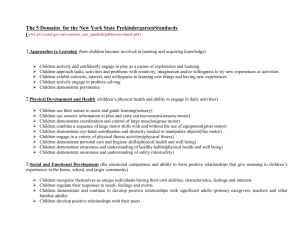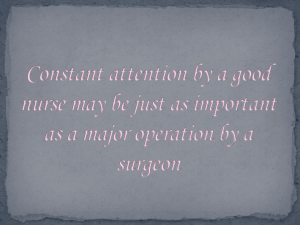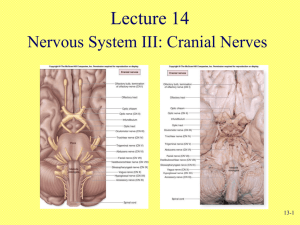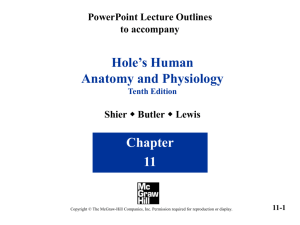PDF Format
advertisement
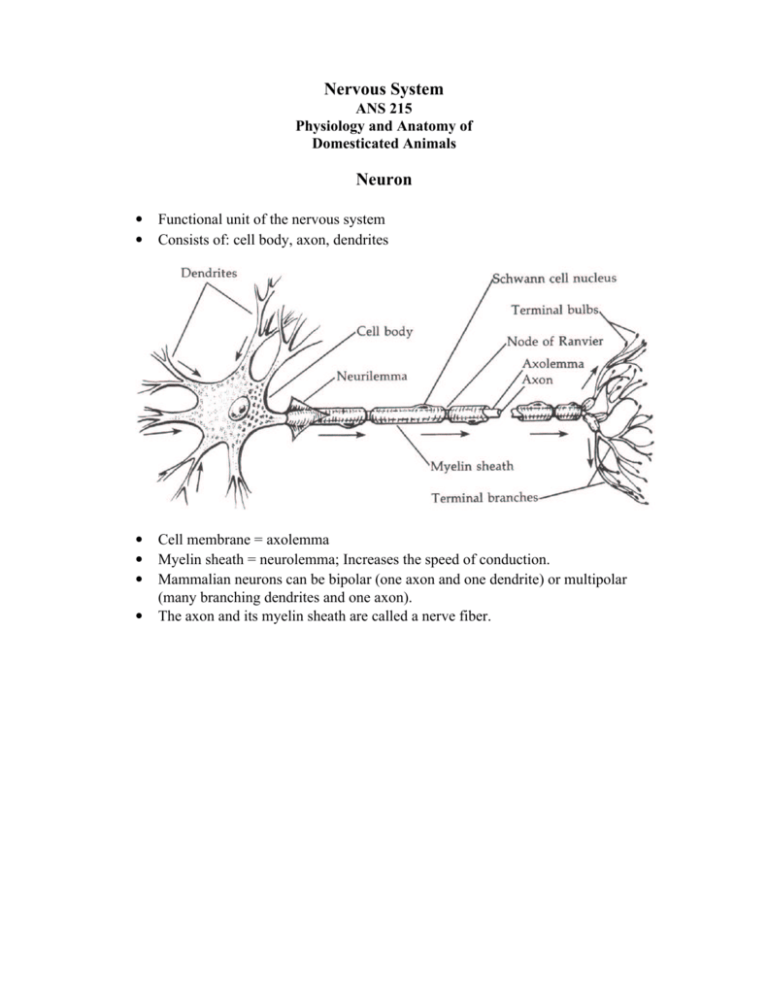
Nervous System ANS 215 Physiology and Anatomy of Domesticated Animals Neuron • • Functional unit of the nervous system Consists of: cell body, axon, dendrites • • • Cell membrane = axolemma Myelin sheath = neurolemma; Increases the speed of conduction. Mammalian neurons can be bipolar (one axon and one dendrite) or multipolar (many branching dendrites and one axon). The axon and its myelin sheath are called a nerve fiber. • Oligodendrocyte Node of Ranvier Nervous System Organization • • Central Nervous System (CNS) - brain - spinal cord Peripheral Nervous System (PNS) - cranial nerves - spinal nerves - autonomic nerves - ganglia Subdivisions of the Brain Location of Brain Subdivisions Sources of Input to Cerebellum The Brain Zebus (Bos taurus indicus) are the sacred cattle of India. There are 30 or more breeds, each of which originated in a province of India. Zebus have a characteristic hump over the shoulder and a large dewlap. They may be colored pale fawn, bay, gray or black. They interbreed with other kinds of cattle, and both they and their hybrids are valued for their ability to resist heat, ticks and insects. Brain Stem Midbrain • Visual reflex center • Auditory reflex center • Nuclei and fiber tracts Pons and Medulla Oblongata • Up and down pathways • Reflex centers Interbrain • Hypothalamus – integration • Thalamus – relay center • Epithalamus – olfactory and pineal gland Cerebellum • • • Not concerned with consciousness or sensation Controls motor function Makes adjustments to prevent distortion of inertia and momentum Basal Ganglia • • • Control of complex semi-voluntary movements (walking, running) Lie deep within the cerebral hemispheres Composed of separate, large pools of neurons Cerebrum • • • Cortex – covering of gray matter Medulla – white matter - Association fibers, commissural fibers (connect two hemispheres) - Projection fibers (connect cortex to other parts of brain and spinal cord) 2 hemispheres that contain: - Sensory areas - Reactions that result in consciousness - High degree of educability - Highest nervous correlation (association) - Decussation - Motor area size and number of complex skeletal muscles movements Evolution and Growth of the Cerebrum Evolution of Cerebral Hemispheres Evolution of the cerebral hemispheres as seen in cross sections. Only the left hemisphere is shown in the lower figures. Light gray indicates the paleostriatum. Reptiles and birds have added new nuclear masses (neostriatum and hyperstriatum). Mammals have developed a cortex. Note the old striatal complex (now called basal ganglia) still present in the mammal. Brain and Spinal Nerves Spinal Cord • • • • • • • Most caudal portion of the Central Nervous System Continuation of medulla Segmented, 31 pairs of spinal nerves Sensory afferent fibers Motor efferent fibers Ascending pathways sensory information Descending pathways motor information Spinal Nerve Cranial Nerves Number Name I Olfactory II III Optic Oculomotor Type Sensor y Sensor y Motor IV Trochlear Motor V Trigeminal Mixed VI Abducens Motor VII Facial Mixed VIII IX X XI XII Distribution Nasal mucous membrane (sense of smell) Retina of eye (sight) Most Muscles of eye Parasympathetic to ciliary muscle and circular muscle of iris Dorsal oblique muscle of eye Sensory - to eye and face; motor - to muscles of mastication Retractor and lateral muscles of eye Sensory - region of ear and taste to cranial twothirds of tongue; motor - to muscles of facial expression; parasympathetic - to mandibular and sublingual salivary glands Vestibulocochlea Sensor r y Cochlea (hearing); semicircular canals (equilibrium) Glossopharynge Sensory - to pharynx and taste to caudal third al Mixed of tongue; motor - muscle of pharynx; parasympathetic - to parotid salivary glands Vagus Mixed Sensory - to pharynx and larynx; motor - to muscles of larynx; parasympathetic - to visceral structures in the thorax and abdomen Spinal accessory Motor Motor - to muscles of shoulders and neck Hypoglossal Motor Motor - to muscles of tongue




